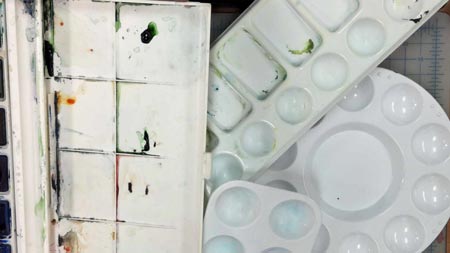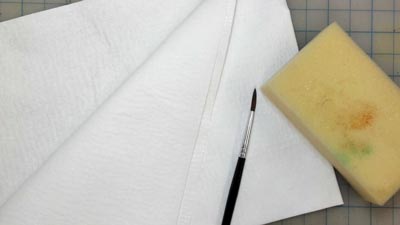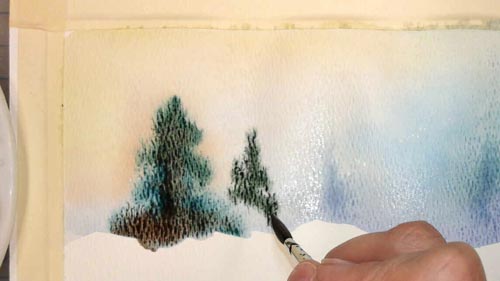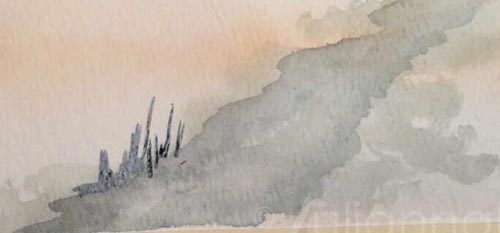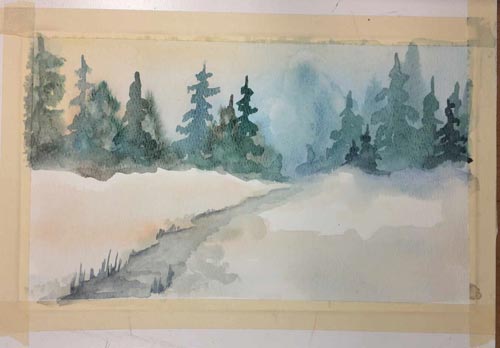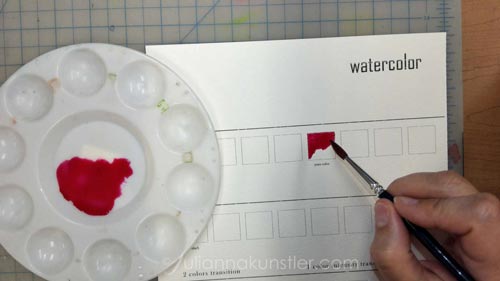
The first exercise is a Color Value scale.
Watercolors use the whiteness of a paper as a WHITE color base. Do not mix your color with a white paint (even if you have it in your set) - it will "kill" the color's transparency. Use water to lighten colors and blank areas for whites.
Create an intense wash of a color of your choice.
Make sure you have a blotting paper next to you to remove excess paint from the brush.
Start with edges.
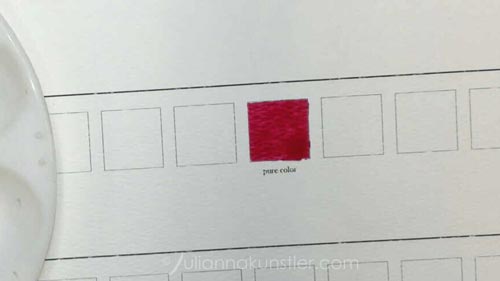
Fill in the square. Distribute the wash evenly inside the square.
If one of the parts has too much of the wash - lift it with a damp brush.
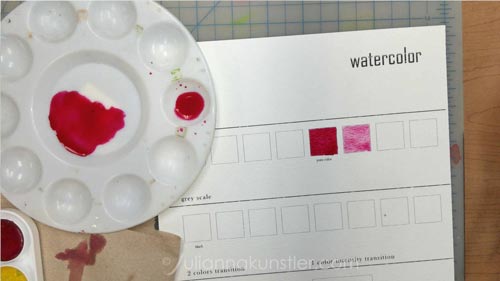
Mix a part of the wash with some water.
Fill in the next square.
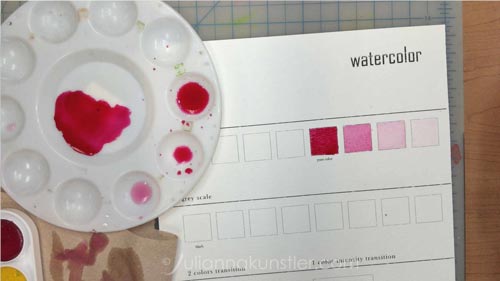
Continue adding more water to lighten the value.
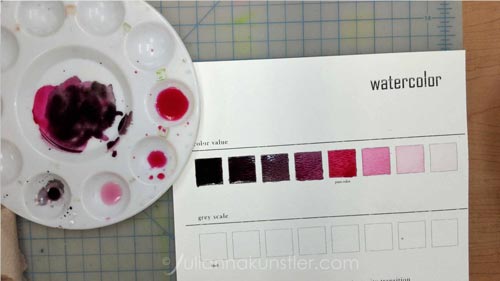
Mix your color wash with a small amount of BLACK wash.
Paint a square to the left of your color wash.
Continue adding more black wash to each square on the left.

Now let the washes dry.
2. Grey scale (wet-on-dry)

Make a BLACK wash.
Fill in the first square. This should be a vary intense wash - it should be BLACK.
Add some water to the wash and fill in the next square.
Continue lightening the values for the rest of the squares.

Let the Value scale dry.
3. Two colors transition (wet-on-wet)
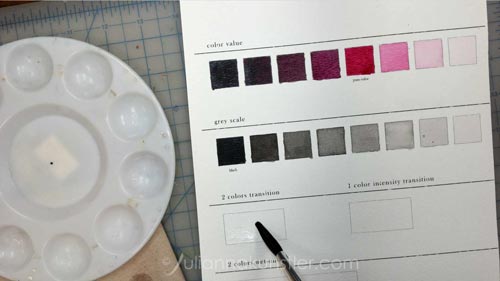
Create a 2-color gradation.
Start with applying water inside the outline. Make the paper damp, not flooded. If you applied too much water - lift some up with a dry brush or let it dry a little.
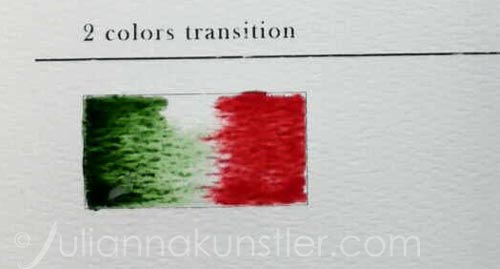
Paint 1/3 of the area with one color and the last 1/3 with another color. Leave a gap in between.
Make sure that the washes are more intense by the two sides.
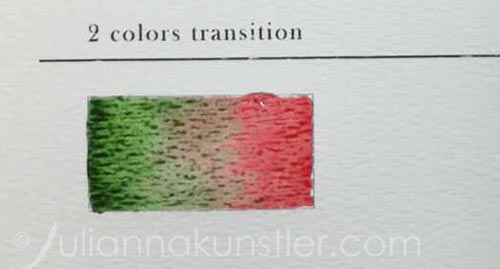
Use a clean damp brush and mix the washes in the center.
4. Color intensity transition

Wet the painting area.
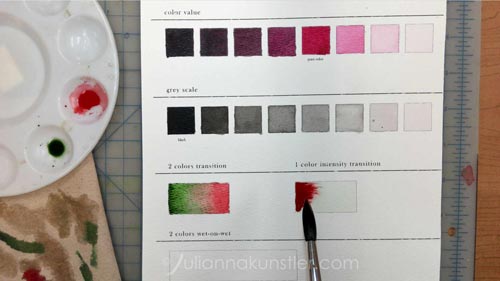
Apply an intense wash on the left side of the area.
Then clean and dry the brush.
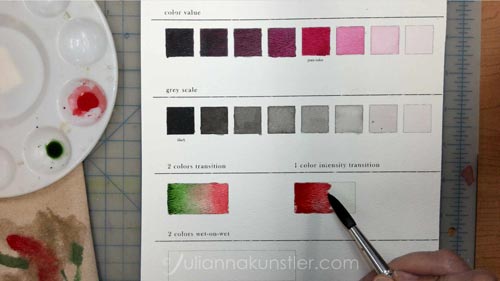
With a slightly damp brush move the color wash to the right.
Clean the brush again and dry it.

Continue cleaning the brush as you proceed with the wash.
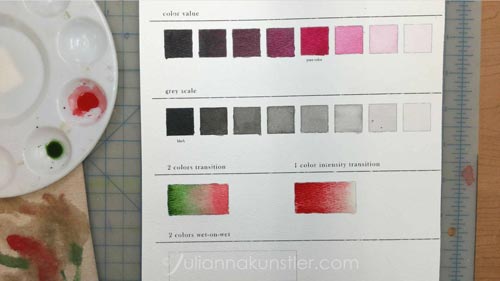
The right side of the painted area should be the lightest value.
5. Wet-on-wet
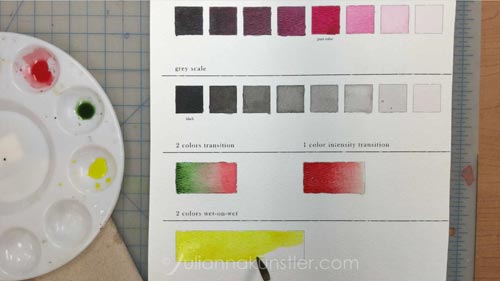
This part is just for fun.
Cover the area with a color wash.
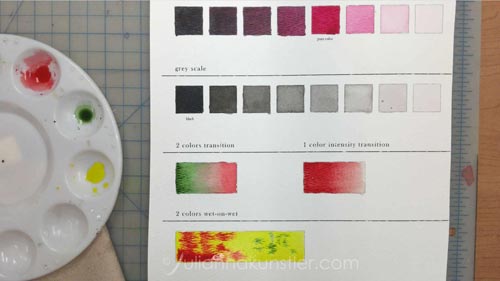
Drip another color onto the wet area or draw random shapes.
See how the paint bleeds and mixes with the first color?
If the first wash is still too wet (flooded) you almost do not have any control of the shapes that you are painting.
If the surface is just damp - you can more or less control it.
This is something that you are going to do in your next exercise.


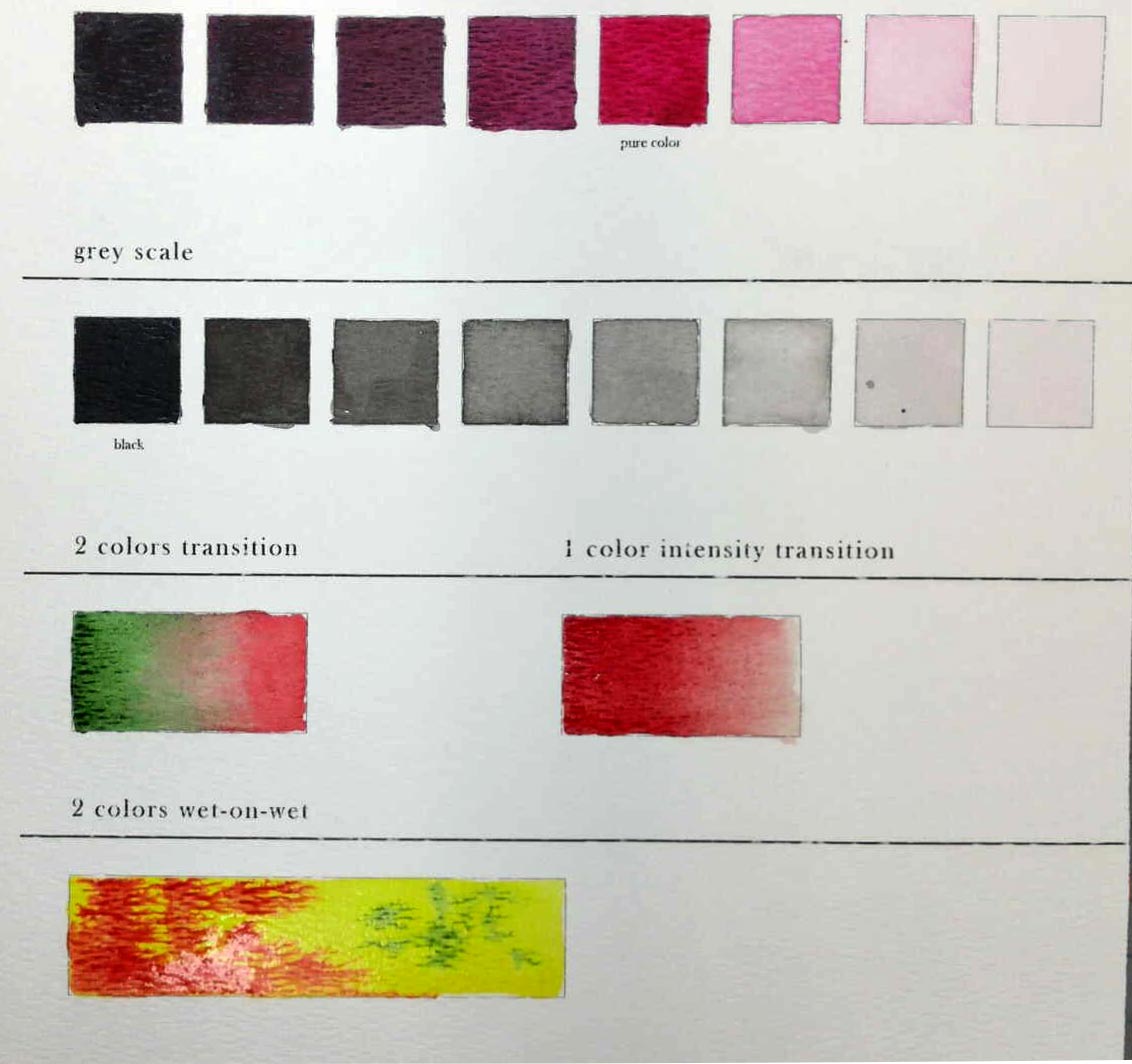
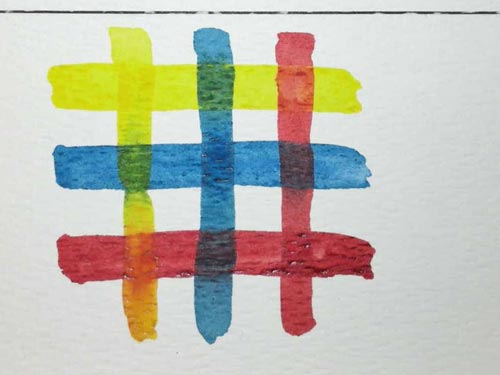
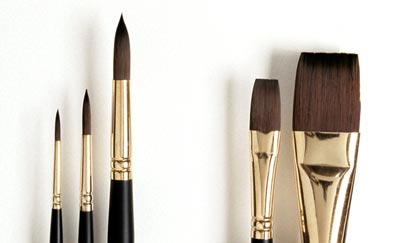
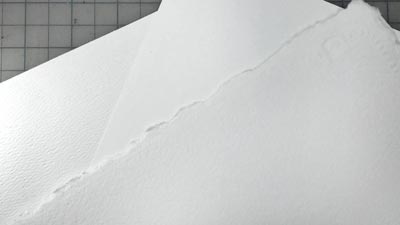 .
.
